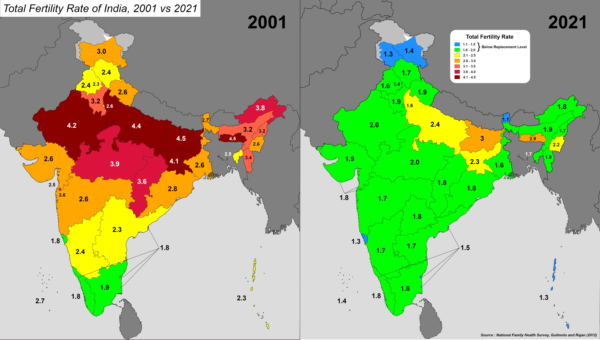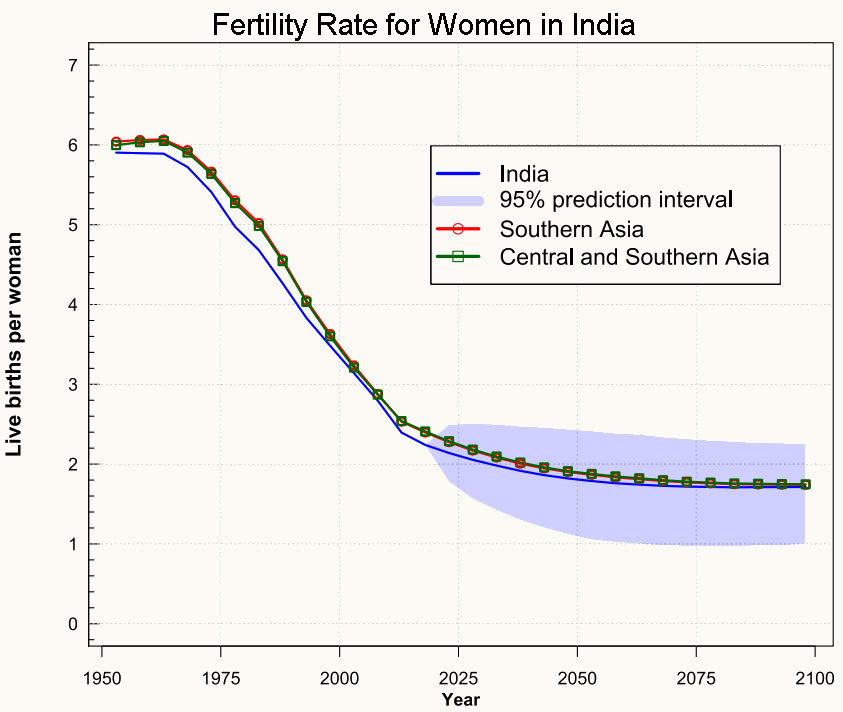How Has India's Fertility Rate Changed Over the Decades?
India’s fertility rate has undergone significant changes over the decades, reflecting broader socio-economic transformations. Here’s a detailed overview of how the fertility rate has evolved:

Historical Context
-
1950s to 1970s: In the early 1950s, India’s total fertility rate (TFR) was approximately 6.2 births per woman. This high rate was characteristic of many developing countries at the time, influenced by factors such as limited access to contraception, high child mortality rates, and cultural norms favoring larger families.
-
1970s: By the end of the 1970s, India’s TFR began to decline gradually, reaching about 5.3 births per woman. This period marked the initiation of family planning programs aimed at controlling population growth, although the impact was limited initially compared to China’s rapid decline during the same period.
Decline in Fertility Rates
-
1980s to 1990s: The fertility rate continued to decrease, reaching around 4.0 by the early 1990s. This decline was attributed to increased awareness and acceptance of family planning methods, improvements in women’s education, and better healthcare access.
-
2000s: The TFR fell further to approximately 3.0 by 2005. The National Family Health Surveys (NFHS) conducted during this decade highlighted significant regional disparities, with urban areas generally exhibiting lower fertility rates compared to rural areas.
Recent Trends

-
2010s: The fertility rate continued its downward trajectory, dropping to about 2.4 by 2015. This period saw a notable shift in attitudes towards smaller families, particularly among younger, urban populations.
-
2020s: As of 2022, India’s fertility rate was reported at around 2.0 births per woman, just below the replacement level of 2.1. This represents a significant decline from 3.4 in 1992 and 5.9 in 1950. The decline has been consistent across various socio-economic groups, although disparities remain between urban and rural populations, with urban women averaging 1.6 children compared to 2.1 in rural areas.
Future Projections

- 2050 and Beyond: Projections suggest that India’s fertility rate could fall to around 1.29 by 2050, and potentially to 1.04 by 2100, reflecting a broader global trend of declining fertility rates. Such changes will have profound implications for India’s demographic structure, including an aging population and potential labor shortages in the future.
Conclusion
The decline in India’s fertility rate over the decades has been influenced by a combination of factors, including improved access to education and healthcare, changing societal norms regarding family size, and the effectiveness of family planning initiatives. As India continues to navigate these demographic changes, the challenges and opportunities presented by its evolving population dynamics will require careful policy planning and implementation.
Citations:
- Pew Research - Key Facts as India Surpasses China as the World’s Most Populous Country
- UNFPA India - India’s Population Growth and Policy Implications
- UNPD - The Future of Human Fertility in India
- Economic Times - Falling Fertility Rates Leave India Staring at a Looming Demographic Challenge
- UN DESA Policy Brief - India Overtakes China as the World’s Most Populous Country
- Statista - Fertility Rate in India (1880-2020)
- MacroTrends - Fertility Rate in India
- UN DESA Policy Brief PDF
comments powered by Disqus